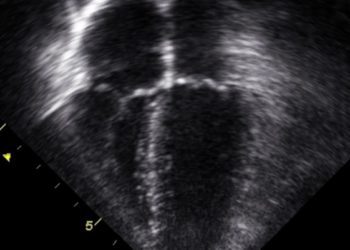Prolonged antibiotic use in very low birth weight neonates associated with increased morbidity
1. Very low birth weight (VLBW) infants who received antibiotics for 4 to 7 days had significant increased odds of short term morbidity and mortality.
2. Each day of antibiotic use among VLBW infants was associated with about 5% greater odds of major adverse outcomes.
Evidence Rating: 2 (Good)
Study Rundown: Early onset sepsis (EOS) is a serious problem among VLBW neonates, therefore providers often initiate empiric antibiotics. These medications are usually discontinue if blood cultures remain negative at 48 hours. However, antibiotic use, especially if prolonged, is also associated with increased rates of morbidity and mortality. In this study, investigators retrospectively reviewed data from patients admitted to Canadian Neonatal Intensive Care Units (NICUs) to analyze the effect of antibiotic duration on short-term morbidity and mortality in VLBW infants. Participants without culture-proven sepsis were divided into 3 groups based on days of antibiotic exposure (0 days, 1 to 3 days, 4 to 7 days) within the first week of life. Results showed infants who had the longest length of antibiotic use (4 to 7 days) had significantly higher odds of major adverse outcomes compared to those with no antibiotic exposure. Furthermore, each additional day of antibiotic use was associated with about 5% higher odds of major morbidity among VLBW infants. Similar results were seen among subgroup analyses of both extremely low birth weight (ELBW) infants, and among VLBW infants who were at very low risk of early onset sepsis (EOS). This study does not account for differences in effects of specific individual antibiotics, nor can it fully account for confounders such as illness severity. Nevertheless, results suggest providers should be cautious when using empiric antibiotics among VLBW neonates.
Click to read the study, published today in Pediatrics
Further reading: Reducing unnecessary antibiotic use in the neonatal intensive care unit (SCOUT): a prospective interrupted time-series study
In-depth [retrospective cohort]: Investigators analyzed data from 14 207 VLBW infants (i.e. birth weight <1500g), admitted to Canadian NICUs from 2010-2016, to evaluate the impact of antibiotic duration on short-term mortality or major morbidity (severe intraventricular hemorrhage, necrotizing enterocolitis, chronic lung disease, severe retinopathy of prematurity, etc.) in this population. Otherwise healthy VLBW infants who did not have culture-proven sepsis within 1 week of life were included in the study and were stratified based on duration of antibiotic exposure: 21% (n = 2950), 38% (n = 5401), and 41% (n = 5856) of infants received 0, 1 to 3, and 4 to 7 days of antibiotics within the first week of life, respectively. Results showed infants with 4 to 7 days of antibiotic exposure had higher odds of mortality or major morbidity than those who were not exposed, or who had 1 to 3 days of exposure (aOR 1.24; 95% CI 1.09-1.41 and aOR 1.38; 95% CI 1.25-1.51, respectively). Results were similar for subgroup analysis of VLBW infants at low-risk of early onset sepsis (defined by cesarean delivery, no labor and no chorioamnionitis) and of ELBW (<1000g) infants. Of note, 31% of infants with low-risk of EOS (1168 in 3797) received prolonged antibiotics (4 to 7 days). Each additional day of antibiotic exposure was associated with 4.7% increased risk (95% CI 2.6%-6.8%) of developing major morbidity in VLBW infants, 7.3% higher odds (95% CI 3.3% to 11.4%) in VLBW infants with low-risk EOS, and 7.0% higher risk (95% CI 3.8%-10.4%) in ELBW infants. Factors associated with longer duration of antibiotic use included low birth weight, earlier gestational age, male sex, lower Apgar score at 5 minutes, and vaginal delivery.
Image: CC/flikr/ceejayoz
©2019 2 Minute Medicine, Inc. All rights reserved. No works may be reproduced without expressed written consent from 2 Minute Medicine, Inc. Inquire about licensing here. No article should be construed as medical advice and is not intended as such by the authors or by 2 Minute Medicine, Inc.







